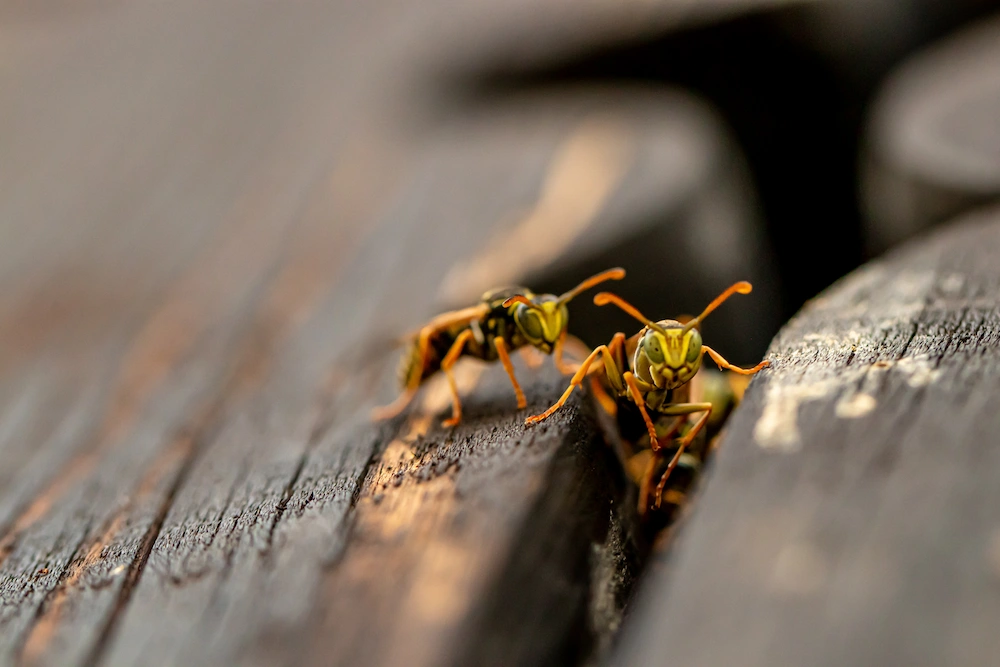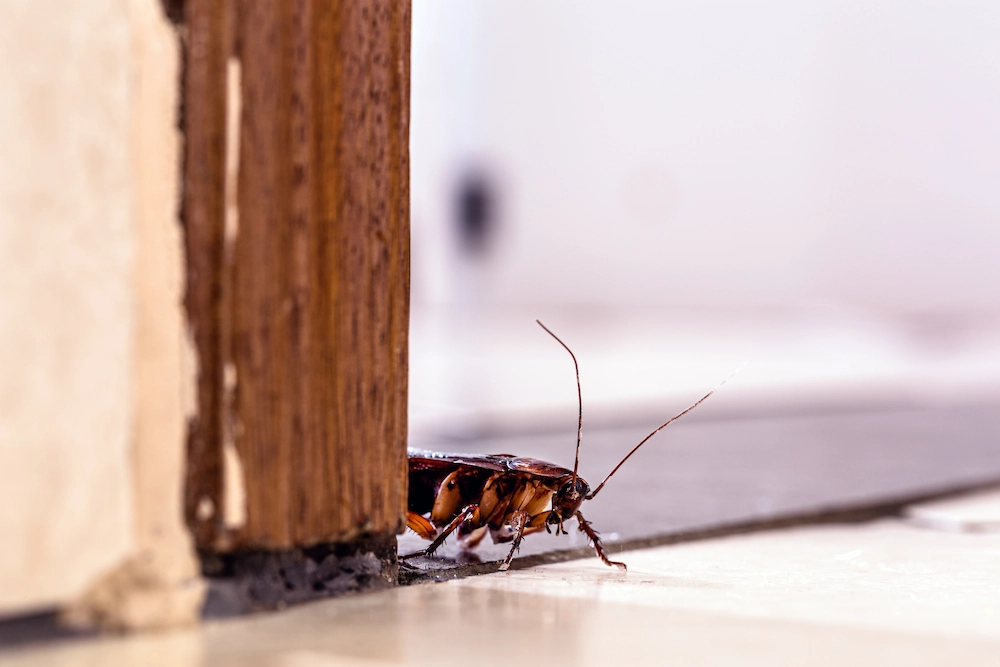Summary: Winter drives stinging pests to seek warm shelter. Learn how wasps, hornets, and certain bees survive the cold, the signs they’ve moved into your home, and the best prevention and removal steps—plus when to call Pointe Pest Control for safe, effective help.
As the temperatures dip across the Pacific Northwest, stinging pests make one last, urgent move: find a safe, insulated place to ride out the cold. Unfortunately, that “place” is often our homes, attics, wall voids, and outbuildings.
In this guide, we’ll explain how different stinging pests prepare for winter, the signs they’ve settled in, and the simple steps you can take to prevent an indoor takeover. If you’re already seeing activity, we’ll also share when to call the pros.
Why Winter Drives Stinging Pests Indoors

Cold snaps trigger a survival mode for wasps, hornets, and some bees. As food sources disappear and nights get longer, colonies either die off or shrink dramatically—leaving fertilized queens to seek protected harborage. Those warm, still, and dry voids in homes mimic natural shelters like hollow logs, so structures become prime real estate.
What Each Group Does to Survive the Cold
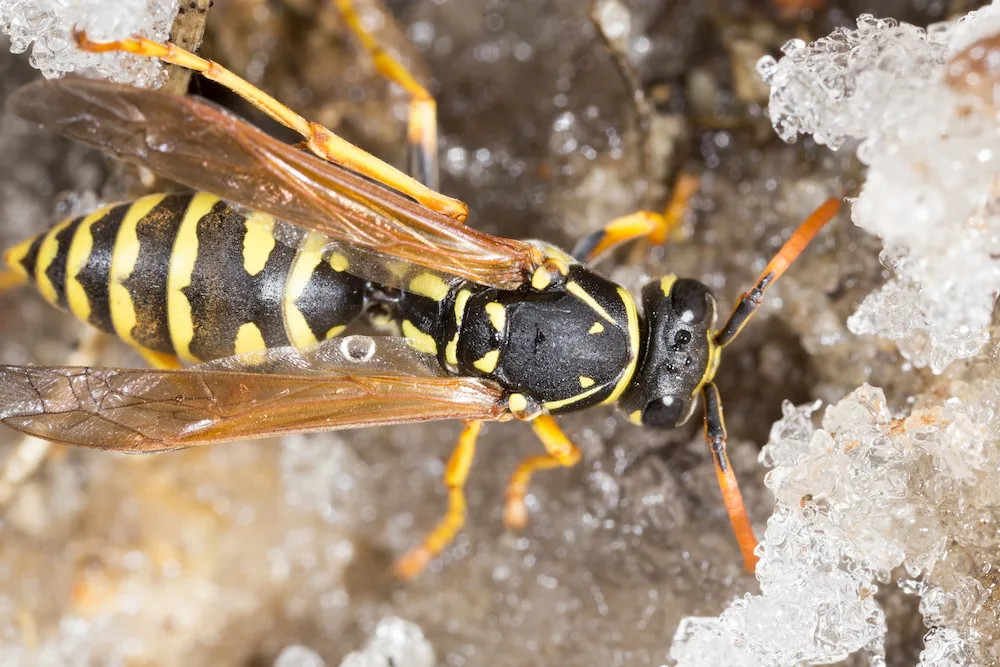
Paper Wasps & Yellowjackets
Late fall is all about the queens. Workers and the old queen typically die with the first hard frosts, while newly mated queens disperse to overwinter. You might notice single wasps lingering around eaves, soffits, and window frames as they test gaps that lead into attics or wall spaces. This cycle explains why homeowners report surprise encounters in spare rooms or garages during warm midwinter thaws.
Bald-Faced Hornets
Although called hornets, these are actually aerial yellowjackets. Their large paper nests are abandoned by winter, so don’t expect last summer’s nest to “restart.” Instead, any queens produced at the end of the season will tuck themselves into sheltered cracks, loose siding, or tree bark to wait for spring. If the shelter happens to be your home’s exterior, they can slip indoors.
Solitary Bees & Carpenter Bees
Unlike social wasps, many bees are solitary. Some species overwinter as adults or pupae in pre-existing cavities, plant stems, or wood. Carpenter bees bore into soft wood to create galleries; if those galleries are in fascia boards or fence rails near your home, winter shelter can become a spring infestation spot when activity resumes.
Signs They’re Overwintering in Your House
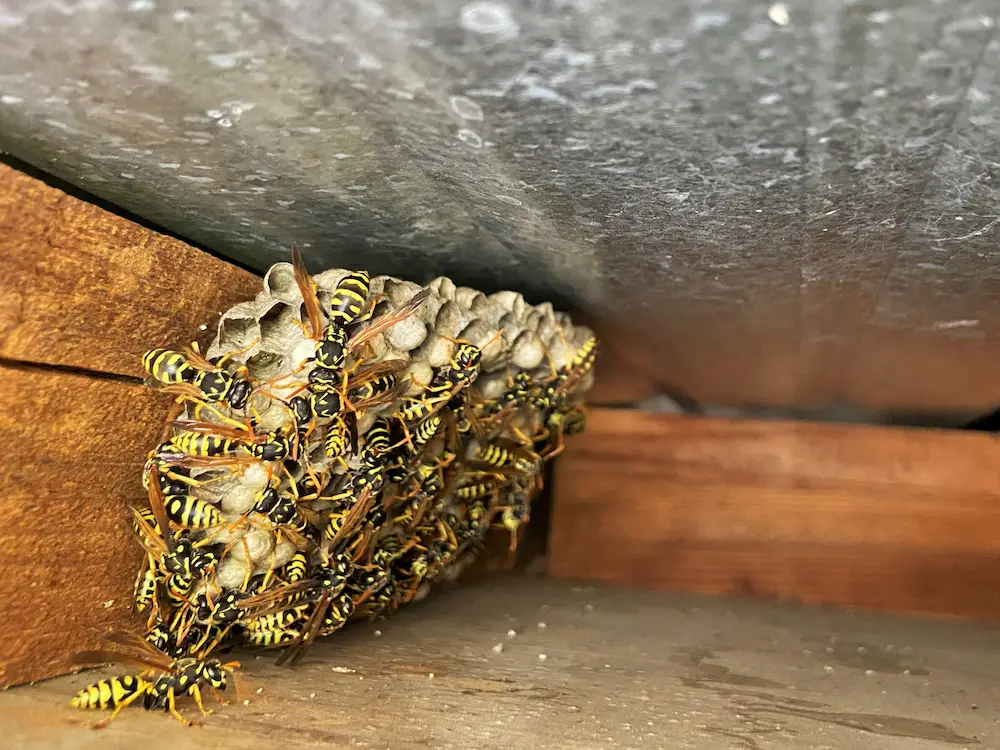
Watch for:
• Buzzy surprises on warm winter days (in a spare room, attic, or garage).
• Rustling or faint tapping behind walls or ceiling voids.
• Clusters of dead or sluggish stinging pests on window sills or in light fixtures.
• Exterior scouting near eaves, roof lines, vents, and loose siding.
Quick Prevention Checklist Before Deep Winter
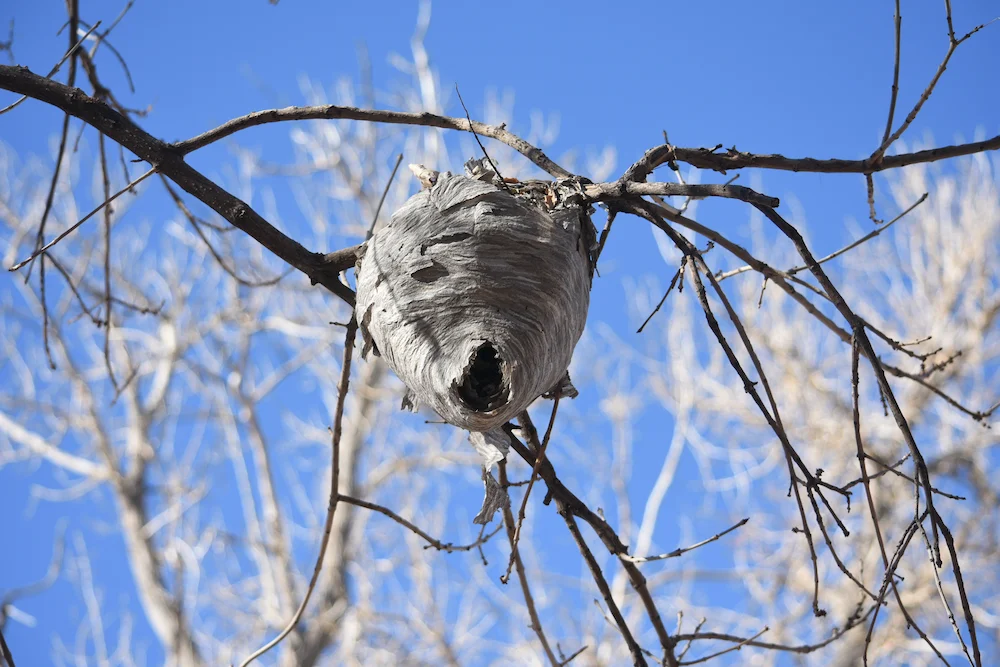
Do these now to reduce indoor overwintering:
• Seal gaps around utility penetrations, vents, and attic access points with caulk or weatherproof foam.
• Replace torn screens and add fine-mesh covers to attic and gable vents.
• Repair loose shingles, siding, and soffit panels; install door sweeps on exterior doors.
• Store firewood 20+ feet from the house and off the ground to reduce harborage.
• Keep trash cans closed and outdoor eating areas clean to eliminate fall food sources.
Safe Removal: When to DIY and When to Call a Pro
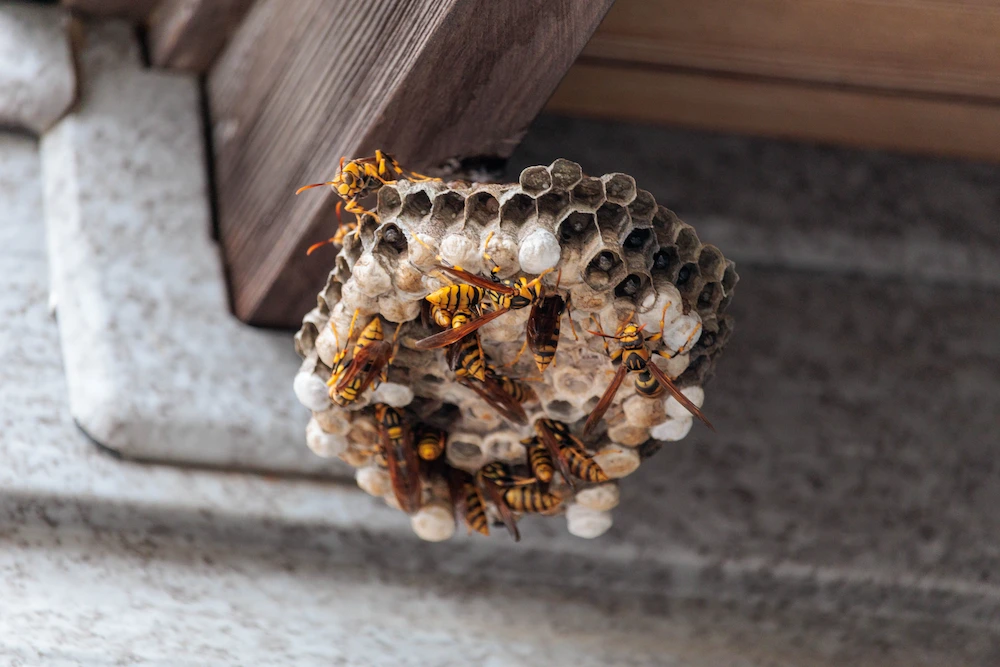
If you’re dealing with a large active nest, persistent winter activity indoors, or anyone in your household has sting allergies, skip the DIY. Professional treatments are targeted, protect non‑target pollinators, and prevent scatter that can create multiple satellite colonies. For preventive help and nest removal, schedule service with a licensed technician.
Local Help You Can Count On
Pointe Pest Control provides year‑round solutions for stinging pests. Learn more about our Residential Wasp Control services and explore service availability in Olympia, WA.
Quick Answers to Common Winter Questions
Do old nests come back to life? No—the colony dies off; new nests are built in spring by overwintered queens.
Why do I see sluggish wasps in January? Warm spells can wake resting queens that slipped into wall voids or attics.
Are winter stings still a risk? Yes. Disturbance during renovations, holiday storage runs, or attic checks can trigger defensive stings.
Citations
Paper wasps can stick around during winter. (n.d.). Pest World. Retrieved October 20, 2025, from https://www.pestworld.org/news-hub/pest-articles/paper-wasps-can-stick-around-during-winter/

